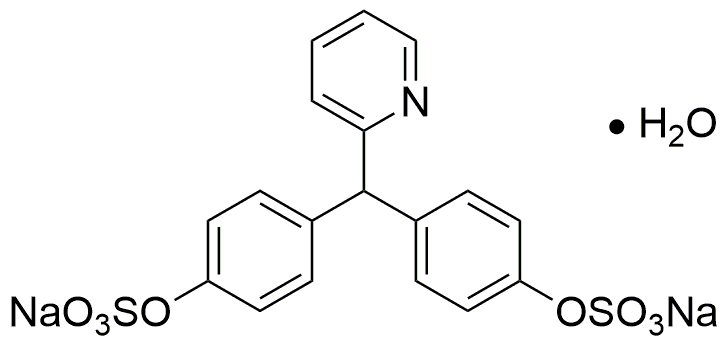Sodium picosulfate monohydrate is widely utilized in research focused on:
- Laxative Formulations: This compound is commonly used in over-the-counter laxatives due to its effectiveness in stimulating bowel movements, making it a popular choice for individuals seeking relief from constipation.
- Colonoscopy Preparations: It plays a crucial role in bowel cleansing before colonoscopy procedures, ensuring that the intestines are clear for accurate examination, which is vital for early detection of gastrointestinal issues.
- Pharmaceutical Development: Researchers leverage its properties in the formulation of various gastrointestinal medications, enhancing the efficacy and safety profiles of these drugs.
- Clinical Research: Sodium picosulfate monohydrate is often studied in clinical trials to evaluate its effectiveness and safety in different patient populations, contributing to evidence-based medicine.
- Food Industry Applications: It is also explored for potential applications in food processing, particularly in formulations that require controlled digestive effects, providing a unique benefit compared to other laxatives.
General Information
Properties
Safety and Regulations
Applications
Sodium picosulfate monohydrate is widely utilized in research focused on:
- Laxative Formulations: This compound is commonly used in over-the-counter laxatives due to its effectiveness in stimulating bowel movements, making it a popular choice for individuals seeking relief from constipation.
- Colonoscopy Preparations: It plays a crucial role in bowel cleansing before colonoscopy procedures, ensuring that the intestines are clear for accurate examination, which is vital for early detection of gastrointestinal issues.
- Pharmaceutical Development: Researchers leverage its properties in the formulation of various gastrointestinal medications, enhancing the efficacy and safety profiles of these drugs.
- Clinical Research: Sodium picosulfate monohydrate is often studied in clinical trials to evaluate its effectiveness and safety in different patient populations, contributing to evidence-based medicine.
- Food Industry Applications: It is also explored for potential applications in food processing, particularly in formulations that require controlled digestive effects, providing a unique benefit compared to other laxatives.
Documents
Safety Data Sheets (SDS)
The SDS provides comprehensive safety information on handling, storage, and disposal of the product.
Product Specification (PS)
The PS provides a comprehensive breakdown of the product’s properties, including chemical composition, physical state, purity, and storage requirements. It also details acceptable quality ranges and the product's intended applications.
Certificates of Analysis (COA)
Search for Certificates of Analysis (COA) by entering the products Lot Number. Lot and Batch Numbers can be found on a product’s label following the words ‘Lot’ or ‘Batch’.
*Catalog Number
*Lot Number
Certificates Of Origin (COO)
This COO confirms the country where the product was manufactured, and also details the materials and components used in it and whether it is derived from natural, synthetic, or other specific sources. This certificate may be required for customs, trade, and regulatory compliance.
*Catalog Number
*Lot Number
Safety Data Sheets (SDS)
The SDS provides comprehensive safety information on handling, storage, and disposal of the product.
DownloadProduct Specification (PS)
The PS provides a comprehensive breakdown of the product’s properties, including chemical composition, physical state, purity, and storage requirements. It also details acceptable quality ranges and the product's intended applications.
DownloadCertificates of Analysis (COA)
Search for Certificates of Analysis (COA) by entering the products Lot Number. Lot and Batch Numbers can be found on a product’s label following the words ‘Lot’ or ‘Batch’.
*Catalog Number
*Lot Number
Certificates Of Origin (COO)
This COO confirms the country where the product was manufactured, and also details the materials and components used in it and whether it is derived from natural, synthetic, or other specific sources. This certificate may be required for customs, trade, and regulatory compliance.


